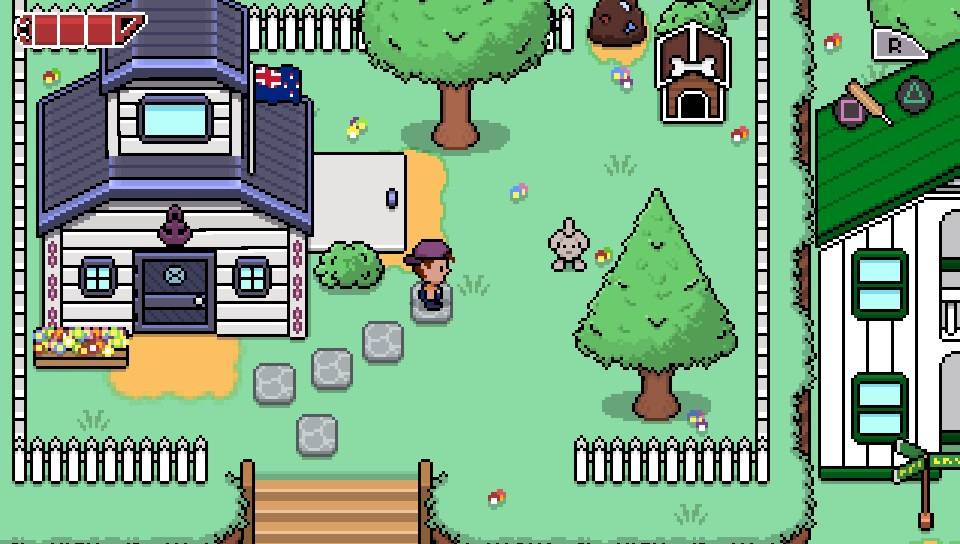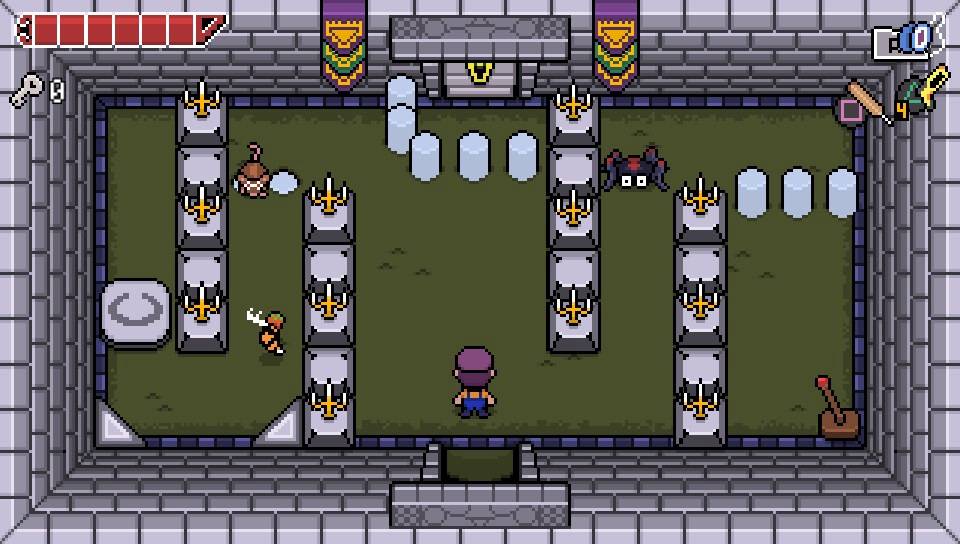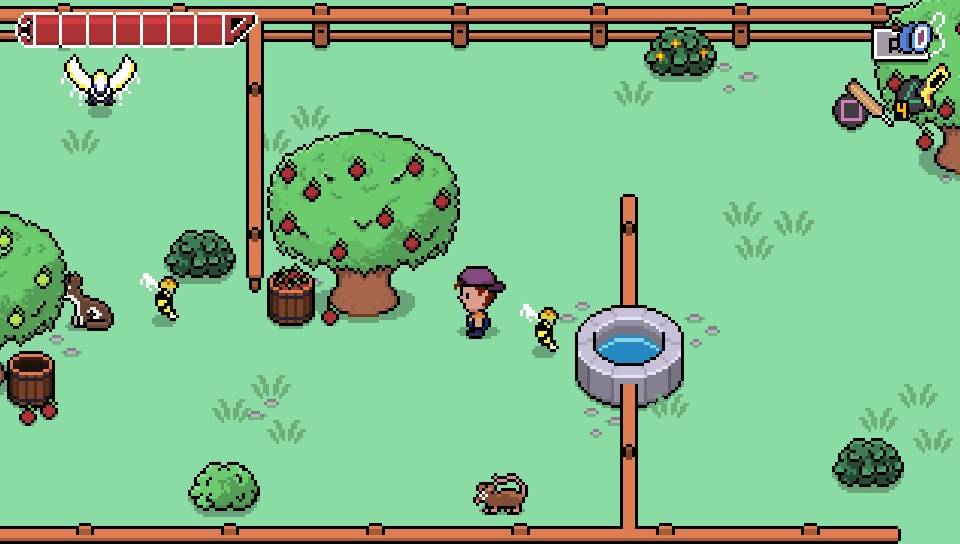Review: Reverie – PS Vita (8/10)
| Platform: PS Vita | Genre: Action-Adventure | |
| Developer: Rainbite | Publisher: Rainbite / Eastasiasoft | |
| Release Date: |  March 29, 2018 March 29, 2018 |  April 5, 2018 April 5, 2018 |
 May 18, 2018 May 18, 2018 |
||
| Limited Edition: |  May 17, 2018 May 17, 2018 |  |
| Price (PSN): | $12.99 USD / $17.49 CAD | 12.99 EUR / £11.99 / $22.95 AUD |
| File size: | 242 MB (Version 1.01) | |
| Compatible: | PS Vita, PlayStation TV | Cross-buy with PS4 |
| Review by Michael | ||
The last time I was visiting New Zealand in a video game was back in the 90s when I was playing The New Zealand Story on the Commodore Amiga 500. With Reverie from Auckland-based developer Rainbite, I got the chance to come back again to the beautiful island of the kiwis. And I already can reveal that I had a pleasant stay.
Story
Reverie tells the story of the ten year old boy Tai who is visiting his grandparents on Toromi Island. When the kid arrives, an earthquake hits the island. From his grandpa the boy learns that restless spirits from three brothers have cursed the island. And this is where his adventure begins.
Reverie is heavily inspired by the Polynesian legend of the demigod Maui and the Giant Fish. As the game is set on a fictional island in New Zealand, it has many references to its culture, myths, and its wildlife.
The story unfolds by exploring the island and visiting its underworld. Talking with non playable characters gives you more information about the island and its inhabitants and some conversations are also necessary to proceed with the game. After completing one of the five dungeons, Tai learns more about the cursers of the island.
Following the story of Reverie is quite entertaining as you will learn many things about New Zealand. My only complaint is that some interactions with non playable characters could have been more story related. For example, Tai’s grandpa always talks the same lines after completing the first dungeon.
Gameplay
Reverie‘s gameplay is heavily inspired by the 2D Zelda games. Equipped with a cricket bat, you start exploring the island and its dungeons in search for mysterious fishing hooks. During the adventure, you will find new weapons and tools which lets Tai reach new areas of the island and to make fighting enemies easier. The overworld map gives you hints where to go next.
Knocked out enemies leave either coins, pizza pieces, or weapon ammuntion behind. With coins, you can buy some extras in the shop and the pizza pieces recuperates Tai’s health bar. Strangely, you can only collect a maximum of 200 coins at once. I didn’t find an explanation for the limitation.
Each dungeon comes with a different setting, enemies and also many puzzles to solve. While the first dungeons are very easy, the later ones become more challenging, related to enemies and also to puzzle solving. Only the last dungeon has an extreme difficulty spike and for my taste too many puzzles that it got annoying, especially after dying that you had to redo some of the puzzles.
After fully exploring a dungeon and finding the boss key, you will meet the dungeon boss. Each of them needs a different strategy, with two of the bosses being more challenging than the others. I don’t want to spoil them but they are all very entertaining, especially the first boss I found quite amusing.
Exploring Toromi Island shows all the different facets of New Zealand and there are many secrets to discover. For bird lovers, there are 20 bird feathers to discover and finding all of them unlocks an extra. You can also challenge yourself in mini games, especially with the Galaga clone Starblazer I had lots of fun.
While enemies and puzzles are all managable, I didn’t like the weapon configuration. Once you find more weapons and tools, you often need to change them depending on enemies or puzzles. As you can only configure 3 tools at the same time, you always have to open the menu to configure a tool you need at the moment. Especially in the last dungeon, where many puzzles rely on different tools, the weapon changing became annoying.
Loading times are very fast when you walk between the areas of the island and the dungeon floors. Only when you finish a dungeon or when you die, loading needs some time. There are occasional hiccups when finding a key or completing a puzzle of a room but nothing that could be seen as disturbing.
It took me around 7 hours to complete the story and another one to finish the bonus dungeon. Finding all the feathers and secrets will add probably 1 – 2 more hours to the game.
Graphics
Inspired by Earthbound and Pokemon, Reverie‘s beautiful pixelart creates a lively island which makes it a joy to explore. There are so many things you can discover on the island, such as animals, plants, and even kiwis!
Sadly, the dungeons lack some of the liveliness the overworld offers but they still look good.
Technically, Reverie runs very fluid on the PS Vita. The developer states that it runs with 60 FPS but I noticed a little bot of screen stuttering – nothing disturbing, but it’s noticable.
Music & Sound
Reverie‘s soundtrack is pretty good and offers various catchy tunes while exploring the different parts of the island. In the dungeons, the music becomes more dramatic, especially for boss fights.
The game’s sound fits to the retro graphic style and there are also funny sound samples for some enemy types.
Conclusion
Reverie is an entertaining “Zelda meets EarthBound” action-adventure for all ages. Thanks to its beautiful pixelart, it’s a joy to explore Toromi Island. Five different dungeons and a bonus dungeon offer various enemies and many puzzles to solve. Although the difficulty is a bit unbalanced (too easy in the beginning, too difficult in the last dungeon) and the weapon configuration could be better, Reverie can be seen as a love letter to New Zealand and recommended to all inhabitants of Vita island.
Review: Reverie | PS Vita
-
Graphics - 8/10
8/10
-
Music & Sound - 8/10
8/10
-
Story - 8/10
8/10
-
Gameplay - 8/10
8/10
-
Lasting Appeal - 8/10
8/10
Summary
+ Beautiful pixelart
+ Entertaining gameplay
+ Varied soundtrack
- Weapon configuration
- Difficulty spike in the last dungeon
Reverie PS Vita Gameplay:
The review was written by Michael. All screenshots are from the PS Vita version. The review is based on a review copy which was provided by the publisher.
Follow us on Facebook, Twitter, and Instagram and Subscribe on YouTube.






